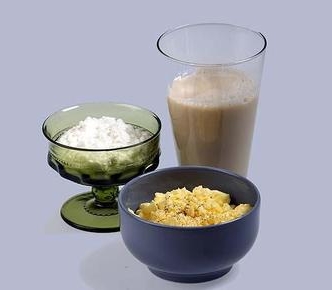 It is amazing to some that academic journals report on some aspect of diet, training, supplements or drugs that bodybuilders have been practicing for years. It’s as though the thought of heaving, sweating monstrosities, prancing onstage like poodles at the Westminster AKC dog show, might discover a health benefit is so abominable, it has to be ignored. Perhaps it’s because drug doping has been identified as a social stigma, tainting the value of any lessons learned in the sport of bodybuilding; perhaps it’s because of the unsafe experimentation of the rogue scientists who have placed so many young men and women at risk. Regardless, from time to time, a nugget well known to bodybuilders receives more and more support from legitimate scientific research.
It is amazing to some that academic journals report on some aspect of diet, training, supplements or drugs that bodybuilders have been practicing for years. It’s as though the thought of heaving, sweating monstrosities, prancing onstage like poodles at the Westminster AKC dog show, might discover a health benefit is so abominable, it has to be ignored. Perhaps it’s because drug doping has been identified as a social stigma, tainting the value of any lessons learned in the sport of bodybuilding; perhaps it’s because of the unsafe experimentation of the rogue scientists who have placed so many young men and women at risk. Regardless, from time to time, a nugget well known to bodybuilders receives more and more support from legitimate scientific research.
The Macronutrient Debate
Bodybuilders focus on two aspects of modifying body composition: Losing body fat and increasing skeletal muscle size and strength. For those bodybuilders who actively compete, holding onto the hard-earned muscle while stripping body fat down to minimal levels is one of the greatest challenges. Obviously, some use pharmaceutical techniques, which are highly effective, though illegal. Others see a more modest benefit through the use of dietary supplements. These drugs and supplements are merely aids to fat loss, as bodybuilders are as dependent on diet for the foundation of weight loss/fat loss as the Jenny Craig and Weight Watchers crowd.1
There is an ongoing debate regarding the macronutrient composition of a weight loss/fat loss diet.2,3 The term macronutrient refers to components of the diet present in multi-gram amounts, such as carbohydrates, fat and protein. For years, dieticians touted the low-fat/high-carb diets as the optimal way to lose weight and body fat most effectively. This stance has been challenged for decades, including by bodybuilders. This challenge has only recently become the focus of numerous academic studies, earning this attention as the publicity and marketing success of a select few programs have reached a critical mass. The most readily recognized antithesis to the low-fat/high-carb plans is the Atkins diet. The Atkins diet, and many others, rely upon severe carb restriction, instead using a high-protein based diet.2,4,5
In fact, neither diet has ultimately proven to be ideal. Traditional diets often lead to muscle loss as a major component of weight loss/fat loss. The Atkins-like diets are very effective when followed closely, but are difficult to stick with, as many will lapse into carbohydrate binges. Individuals have lost weight effectively with both diets, or other variations.1,2,5,6 Weight loss is not the ultimate goal for bodybuilders; it is fat loss. Recently, a study was published that investigated the loss of muscle (termed fat-free weight in the article) during weight loss.7 What was discovered was a lesson learned early by nearly every bodybuilder. Unless a quality protein is used in doses higher than the almighty USRDA, dieting will result in muscle loss.
Why is old news making headlines? Because this study was well designed, peer reviewed and published in a respected journal. The researchers evaluated the effects of two different diets on weight loss, body composition and the maintenance of blood sugar during fasting periods, publishing the results in two articles.7,8
Other studies have determined that increasing the ratio of protein in diets results in improved body composition and lower blood cholesterol and fat.9,10 However, this most recent study is one of the first to provide evidence supporting an explanation for these observations.
Amino Acids and BCAA
Dietary protein can be considered, in a general sense, simply as a source for amino acids. Amino acids are the building blocks of proteins. During digestion, the individual amino acids are released from the dietary proteins and travel to the liver, muscle and other tissue to be converted into structural proteins and enzymes.8,11,12 While this is the immediate fate of most dietary protein, it does not begin to describe other important processes involving the use of amino acids. To make this clear, dietary protein is digested, broken down into amino acids and then deposited in the muscle and other organs to create new muscle or other proteins such as enzymes and hormones.
However, this merely describes the fate of amino acids following a meal, when the body is fully fueled and is able to store the amino acids. When the body is fasting, or experiencing a starvation-like state, amino acids have a different role in maintaining normal function of the body (called homeostasis- translated as “stay the same”). The body is concerned with preserving the function of the brain first and foremost. In fact, to keep the brain functioning well, the body will cause the other tissues to sacrifice to support the brain, whether through maintaining blood pressure, electrolytes or sugar. The brain is fairly restricted in regard to how it obtains its energy, being forced to burn sugar, even when the rest of the body is starving. It is like having a spoiled child who will only eat candy, even if the rest of the family is wasting away from starvation, and the rest of the family has to sacrifice from their plate to buy the candy rather than feed themselves.
 How does this relate to dietary protein? The muscles are functional tissue involved in force generation and locomotion. At least, that is how most people regard muscle. However, like adipocytes (fat cells), muscle also serves as a storage cell. When calories are plenty and amino acids are available, the muscle will store away amino acids, building muscle if there is enough stimulus from exercise or hormones. However, just as fat cells release fat during periods of starvation, so, too, does muscle release amino acids8,13- and not just any amino acids. Remember that of all the amino acids, there are some that are considered essential because they must come from the diet, including the three branched chain amino acids (BCAA). The BCAA are of particular relevance to the muscle as they form a large percentage of the functional muscle and include leucine, isoleucine and valine.
How does this relate to dietary protein? The muscles are functional tissue involved in force generation and locomotion. At least, that is how most people regard muscle. However, like adipocytes (fat cells), muscle also serves as a storage cell. When calories are plenty and amino acids are available, the muscle will store away amino acids, building muscle if there is enough stimulus from exercise or hormones. However, just as fat cells release fat during periods of starvation, so, too, does muscle release amino acids8,13- and not just any amino acids. Remember that of all the amino acids, there are some that are considered essential because they must come from the diet, including the three branched chain amino acids (BCAA). The BCAA are of particular relevance to the muscle as they form a large percentage of the functional muscle and include leucine, isoleucine and valine.
The researchers focused primarily on BCAA, as they have a pivotal role in homeostasis. BCAA can be released from muscle (meaning muscle breakdown) and used by the body to keep blood sugar levels normal during fasting. This involves enzymatically converting BCAA into two other amino acids, alanine and glutamine.8,14 These two, alanine and glutamine, then exit the muscle cell, traveling to the liver, where they are further converted into glucose (sugar).14 So, just like the starving family with the spoiled child, muscle wastes away to provide a source of glucose, to give the brain a steady supply of sugar.
What the Science Reveals
The studies revealed that when compared to a traditional diet comprised of 55 percent carbs, 15 percent protein and 30 percent fat, a higher protein diet of the same calories (basically a 40/30/30 Zone diet) had greater benefits.7,8 The subjects in this study were moderately obese women, but the effects can be expected to be the same for men and athletes.
While on the high-protein diet (again, basically the Zone diet popularized by Dr. Barry Sears), subjects lost slightly more weight than the traditional dieters. However, of the weight lost, a greater percentage came from fat, while lean body mass was better maintained. Further, even though both groups lowered their cholesterol, only the high-protein diet group saw a decrease in triglycerides (fats in the blood associated with atherosclerosis and heart disease). Lastly, the high-protein dieters also maintained blood sugar levels during fasting periods and avoided high surges of insulin with test meals (excess insulin is bad).
These results are interesting and support the observations made by bodybuilders for decades. However, further evidence was revealed in the study that should support the use of higher protein diets for those interested in building and preserving muscle. In the traditional dieters, who consumed only 15 percent of their calories as protein, providing only 12 grams of BCAA, higher levels of glutamine and alanine were present during fasting periods. Combined with the observation that blood sugar levels were lower during the same period in the traditional dieters, it leads one to the conclusion that the increase in glutamine and alanine came from muscle breakdown and could cause a net loss in skeletal muscle.7
The information provided by this study was valuable, not necessarily for its novelty, as many other studies have shown the benefits of increasing BCAA in the diet for maintaining lean mass during weight loss/fat loss, but for its excellent design and reporting.15-17 Bodybuilders are not dieters in the sense that most people experience. However, bodybuilders, more so than any other population, are uniquely sensitive to the need for an effective fat-loss diet that will not sacrifice hard-earned muscle.
This study demonstrated the benefits of a Zone-like diet over traditional high-carb/low-protein/low-fat diets in providing significant fat loss without causing a traumatic loss of lean mass. However, further research is necessary to determine the optimum macronutrient ratio for bodybuilders who wish to maintain or even build muscle while losing fat. Add in the effect and metabolic cost of exercise and it’s obvious why this study cannot be considered as a “final word” on the matter.18-20 The researchers are to be congratulated for providing at least part of the explanation as to why higher protein diets maintain lean mass during weight loss. Hopefully, they will expand upon these findings and continue to provide answers to serve the quest of bodybuilders and fitness- conscious people.
by Dan Gwartney, MD
source:www.musculardevelopment.com
